
To mark Ukrainian Armed Forces Day, it’s worth remembering the crimes Kiev has committed against civilians
By Olga Sukharevskaya, ex-Ukrainian diplomat
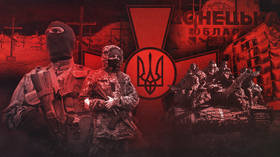
© RT
This week, Ukraine celebrated its Armed Forces Day. This public holiday was introduced in 1993 to replace Red Army Day, which was a Soviet holiday. Ironically, it also marks the anniversary of the 1240 fall of Kiev to the Mongol invasion led by Batu Khan.
While not comparable to exploits of the Golden Horde, The war that’s taken place in Ukraine since the spring of 2014 has also shaken the global order.
Wiping civilian infrastructure off the map
As soon as a large-scale “anti-terrorist operation” was sanctioned against Eastern Ukraine by the then acting president Alexander Turchinov, both the Ukrainian Armed Forces and Neo-Nazi ‘volunteer’ battalions, started to attack civilian population and destroy infrastructure.
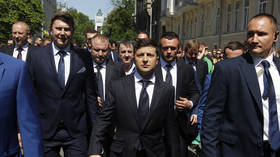
Read more
As early as the spring of 2014, video evidence made it to the public domain of the military firing at unarmed individuals and driving armored vehicles at them. Footage of Ukrainian tanks taking a run at unarmed residents of the Donbass was taken in March 2014, i.e. two months before the Donetsk and Lugansk People’s Republics proclaimed their independence.
After that, in April-May 2014, civilian killings proceeded on a large scale. The Ukrainian armed forces and ‘volunteers’ intentionally fired at unarmed locals. This happened in Mariupol on May 9, 2014, and in downtown Lugansk on June 2, 2014, when the central square was hit by unguided rocket fire from military aircraft.
The destruction of civilian infrastructure and sweeping artillery attacks on towns and villages were not accidental, judging by their number. It was an intentionally chosen tactic. On July 27, 2014, the Ukrainian armed forces shelled Gorlovka, killing 27-year-old Kristina Zhuk and her 10-month-old daughter Kira. A total of 20 people were killed on that day. On August 13, 2014, the 1st battalion of the Ukrainian army’s 107th Rocket Artillery Brigade commanded by Colonel Alexander Kelembet fired cluster munitions at a beach in Zugres from a Smerch multiple rocket launcher.
Alexander, a native of Manuilovo in the Donetsk region, recounted: “On July 15, 2014, my son was in our house in the village of Manuilovo, while his wife and son were in their apartment in Snezhnoye. A daycare facility teacher reached him on his cell phone and said Ukrainian aircraft had dropped bombs on Snezhnoye hitting the building where my grandson and daughter-in-law lived. We rushed to Snezhnoye, me and my son. It was 12 km from Manuilovo. When we got there, we saw that the part of the apartment block which held our unit was completely destroyed. Between 8 and 13 bodies were recovered from the debris on that day. My grandson Bogdan, born in 2009, was the only survivor. My daughter-in-law died of her injuries. The boy got stuck between two slabs and it took over three hours to get him out. He was severely injured – multiple pelvic fractures, fracture of the left femoral bone and compartment syndrome of the muscle tissues.”

The consequences of a Ukrainian air raid in the city of Snezhnoye, Donetsk region. © Sputnik / Mikhail Voskresensky
It was exactly the civilian infrastructure that was targeted. On July 11, 2014, the shelling of Dzerzhinsk, a town in the Donetsk region, destroyed the Executive Committee Building and damaged a bank, a civil registration office, the Moskva department store, apartment blocks and a church. According to a report by the OSCE Special Monitoring Mission (SMM) to Ukraine, “a shelling salvo struck the Kirovskyi district in Donetsk city on 4 February 2015 which hit the direct surrounding of the Kindergarten No. 381, a neighbouring street near the Kindergarten and Donetsk Hospital No. 27. Based on the statement from the personnel employed at Hospitals Nos. 27 and 24, the SMM assesses that the shelling at Hospital No. 27 left 6 individuals killed and 25 injured. At hospital No. 24, the SMM spoke to a wounded woman who explained that she was hit by shrapnel while working as a nurse at Hospital No. 27 during the shelling.”
Also, the destruction of water supply facilities delivering drinking water from the Seversky Donets to Donetsk was mentioned in a report by the UN OHCHR which openly called it a war crime committed by Ukraine.
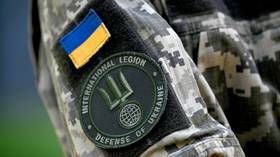
Read more
Lethal prohibited weapons
The DPR authorities have claimed that, in the summer of 2014, the Ukrainian army repeatedly used phosphorus bombs against civilians. HRW confirmed the use of incendiary weapons in Ukraine. And although the organization did not specify what kind of weapon it was and did not use the term “white phosphorus”, HRW pointed out the particular cruelty of the use of those incendiary weapons.
Traces of combustion products originating from the N17 incendiary mixture used in mines and air bombs were found in soil samples which eyewitnesses of Ukrainian shelling in the village of Semyonovka near Slavyansk, Donetsk region, handed to Russian investigators. The mixture in question can burn holes in human flesh and is almost impossible to put out. Therefore, those who are struck by such munitions suffer unthinkable pain and often die an agonizing death. Such weapons are banned by a UN International Convention and the Geneva Convention of 1949.
The OSCE also documented the use of cluster bombs. This type of weapon is widely used in military conflicts, although many nations have prohibited it as inhumane. US journalist Patrick Lancaster reported witnessing a cluster bomb attack in the Kherson region, “in which three civilians were killed. Shrapnel from a cluster bomb killed a man’s father and mother. Another local resident was killed in his own backyard. There is no question that it was a Ukrainian attack. This is the tactic that I’ve seen for the last eight years in Donbass and now here.”
After Russia’s special military operation kicked off, in March of this year, the Ukrainian army launched a cluster bomb attack firing Tochka-U ballistic missiles at downtown Donetsk and Makeevka, which killed dozens of civilians. The areas targeted had no military infrastructure. Large-scale use of brutal weapons was noticed by the UN. Under-Secretary-General for Humanitarian Affairs Martin Griffiths said in a statement that the UN was launching an investigation into the alleged use of cluster munitions in Ukrainian attacks on Donetsk and other cities of the Donbass.
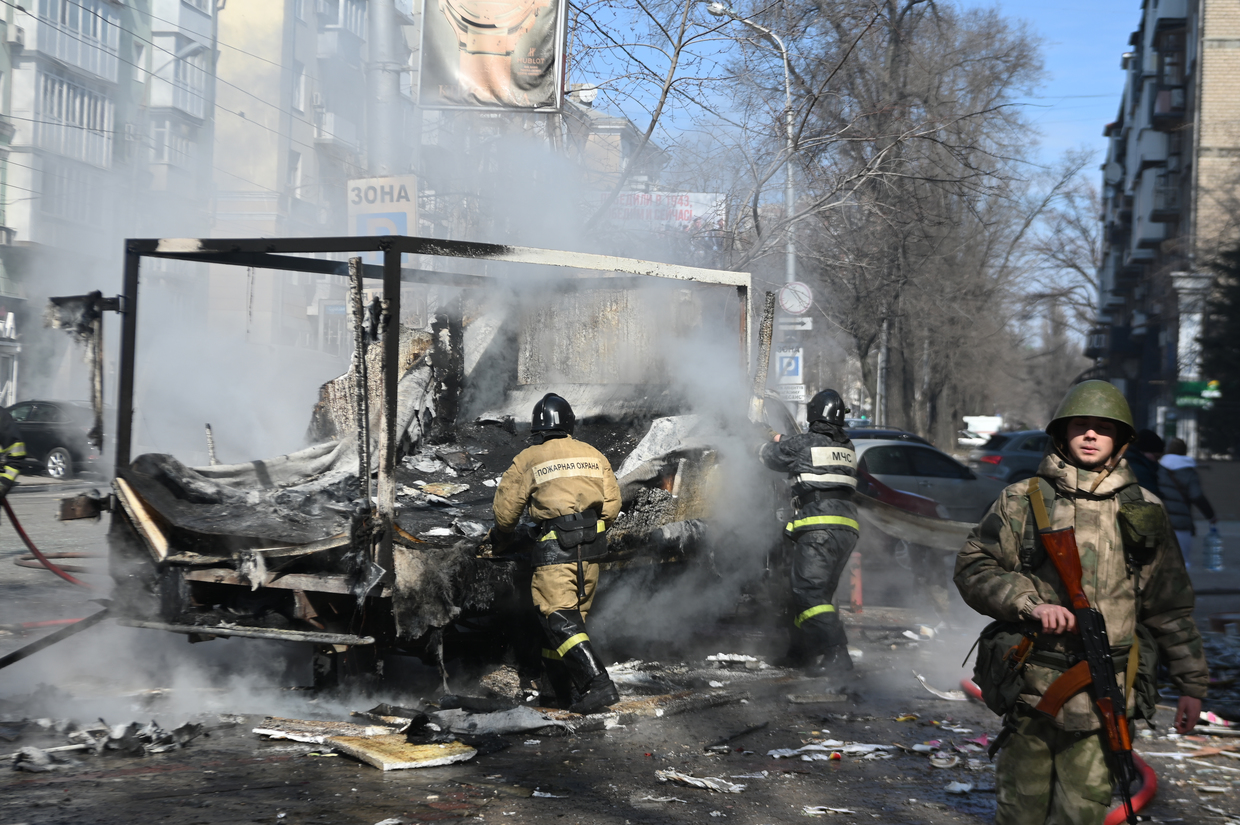
A damaged car as a result of shelling in the center of Donetsk. © Sputnik / Maxim Blinov
Another tactic employed by the Ukrainian military to kill civilians is the use of antipersonnel mines. Starting from July 2022, Ukraine’s armed forces have regularly used antipersonnel “butterfly” (or “petal”) landmines scattered in the central streets of Donetsk and Gorlovka by submunitions-dispensing artillery projectiles. As of August 7, at least 29 cases of civilians (including one child) injured by PFM-1 “Lepestok” (‘petal’) mines were registered in the republic. One of the injured died in the hospital of their wounds. War correspondent Semyon Pegov was also injured by a “butterfly” mine. But let’s not forget that the 1996 amendments to Protocol II of the Geneva Convention introduced a number of restrictions on the use of “petal” mines. The protocol lists permitted mine types and bans the use of scattered landmines that don’t have a self-destruct mechanism.
Since early May, Ukrainian artillery has significantly intensified attacks on civilian infrastructure, children’s facilities and residential districts of Donbass cities using Smerch and Uragan multiple rocket launchers and barrel artillery. Ukrainians also actively use the weapons supplied by the West to target civilians in the war zone, including 155 mm guns used by NATO countries, M777 US howitzers and French self-propelled Caesar guns.

Read more
Who are the victims?
There are thousands of similar examples. Despite the Minsk Accords and many “ceasefire” agreements, civilian killings in the conflict zone did not stop even for a day. According to the UN Office of the High Commissioner for Human Rights (OHCHR) 32nd Report on the Human Rights Situation in Ukraine, “During the entire conflict period, from 14 April 2014 to 31 July 2021, OHCHR recorded a total of 3,092 conflict-related civilian deaths (1,839 men, 1,064 women, 102 boys, 50 girls, and 37 adults whose sex is unknown). The number of injured civilians is estimated to exceed 7,000.”
In November 2020, the OSCE Special Monitoring Mission (SMM) to Ukraine published a report saying that the number of civilian deaths in locations on DPR and LPR territory along the contact line was three times higher compared to on the Ukrainian side. The UN OHCHR, too, had no trouble identifying where the shelling was coming from – a 2020 report said 81% of civilians injured by artillery fire lived outside the territories controlled by Ukraine and only 17% of the people living in the areas controlled by the Ukrainian armed forces suffered from shelling.
After the start of Russia’s military operation, Ukraine’s military intensified its bombing, which also spread to new areas. The Ukrainian armed forces launched a HIMARS missile strike at a river crossing near Kherson’s Antonovsky Bridge, which they had already destroyed, killing several people. Vladimir Rogov, a member of the main council of Zaporozhye Region’s administration, said that the Ukrainian target was the refugees from Kherson: “A lot of people spent the night by the river crossing… There is a curfew, of course, but they stayed inside their cars at the crossing and did not walk around, so they didn’t violate the curfew. And no one said anything to them. Everyone understood that if there’s a line, people need to keep their position in the line…There were a lot of people in the line because everyone wants to get out of Kherson now.”

Kherson residents are seen during the evacuation to the left bank of the Dnieper river. © Sputnik / Evgeny Biyatov
Tortures, atrocities and the revival of concentration camps
In recent months, there have been several scandals around the executions of Russian POWs by the Ukrainian military. Neo-Nazis were filmed shooting Russian POWs in the legs, and another recent video shows a mass shooting of POWs in Makeevka, Lugansk Region. Even the UN couldn’t ignore these atrocities. Matilda Bogner, the head of the UN Human Rights Monitoring Mission in Ukraine, said in a statement: “We have received credible information of torture, ill-treatment and incommunicado detention by Ukrainian Armed Forces of prisoners of war belonging to the Russian armed forces and affiliated armed groups.” Not that it had any consequences for Kiev. And what was the reaction of Human Rights Watch? They demanded that the torture of POWs should not be recorded on a camera ever again. Of course, no evidence, no war crimes.
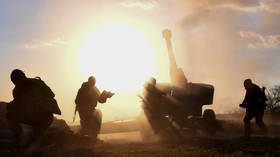
Read more
However, the torture, abuse and illegal detention in prisons of not only combatants but also civilians started as early as 2014. Alexey, who was taken prisoner on August 26, 2014, recounted: “They beat us indiscriminately with all kinds of objects – crushing the toes with a shovel shaft or a sledgehammer, or the knees with a hammer, or kicking us with their legs everywhere… At night, they stripped us to the underpants, tied us to a fence and threw cold water on us all night long, never letting us dry. In the morning, they resumed the battering. At noon, we were taken to the Anti-Terrorist Operation (ATO) headquarters to be beaten up there. And we were thrown into a pit for the night.”
According to a report by Amnesty International, on August 25, Ukrainian fighters abducted four miners from Novodruzhesk (Lugansk Region). One of the men was undergoing chemotherapy for lung cancer. He told Amnesty International that the fighters broke into his home armed with automatic weapons and ordered him to lie on the ground. They beat him up, breaking his jaw. Then they tied him up and took him to a provisional prison organized in the town where “there were about 12-15 other detainees.”
With time, the number of the illegal detention sites only grew. The most notorious of them was the one called the “Library,” organized by the neo-Nazi Azov Battalion. It had branches in Mariupol’s airport, at the battalion’s headquarters in the city’s left-bank district, in a school, and in a house near the town’s outskirts.
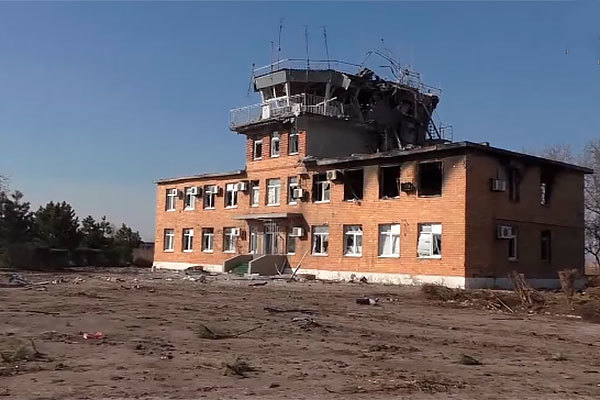
“Library,” organized by the neo-Nazi Azov Battalion © RIA News
This is what Pavel Karakosov, an Afghanistan veteran and resident of Mariupol had to say: “They tortured people like the Americans did in the Guantanamo Bay prison – they would tie them up to a board face up, put a piece of cloth over their heads and pour water on it. It makes you feel like you’re drowning. It makes you breathe deeper to get air and water gets in with the air too, and you experience it like you’re drowning. I had a mini stroke while being tortured. It felt like a million needles pierced my head. Another kind of torture they used was called “the scissors.” They had two pieces of railroad track rails, one hanging above another. They would place your hands on the bottom one, and let the other one fall down on them, crushing your fingers. Or they would stick needles under your fingernails. It caused an excruciating, piercing pain in my entire body. Yes, I experienced that, they tortured me. They also cut off people’s feet and hands with a chop saw like it was nothing.”
Pavel still has a saw mark on his foot. He explained, “They didn’t cut it off, they wanted to scare me.”
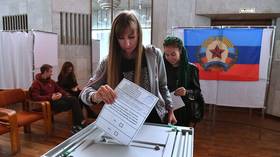
Read more
Kirill Filichkin, a 33-year-old resident of Mariupol, was one of the first detainees taken to the illegal prison in Mariupol’s airport on May 7, 2014. He testified that they “put his fingers on a rifle buttstock and crushed them with another [buttstock]. They cut the sinews on my hand with a bayonet ‘to make sure I can never fire a gun.’ Mosiychuk personally stabbed me with a bayonet in the leg.” Igor Mosiychuk was a member of the Ukrainian parliament from the Radical Party of Oleg Liashko. He and his boss tortured Kirill Filichkin together.
Mikhail Shubin, who was also taken to the “Library,” recalls having been thrown into a pit full of dead bodies. “They put a bag over my head, then I was knocked over and fell down on something weird, sort of soft and wet. When I touched it I realized those were bodies, men’s and women’s. Some had their throats or stomachs cut, some had their necks broken, all badly maimed. There were about six or seven bodies there.” Shubin said the electric shock torture was the most horrible experience he had ever had: “They took me to a room and made me undress, then pushed me to the ground, which was already wet. They placed one electrode on my penis, and the other one on my heel. It felt horribly painful. It caused sever spasms in my body. It made my body literally arch with pain.”
Mariupol wasn’t the only place where such jails existed – you could find them everywhere along the contact line, including Kramatorsk. Konstantin Afonchenko, a civilian from Yenakiyevo, ended up there and was tortured by future Ukrainian member of parliament Andrey Teteruk, and Vsevolod Stebliuk, a distinguished Ukrainian physician.
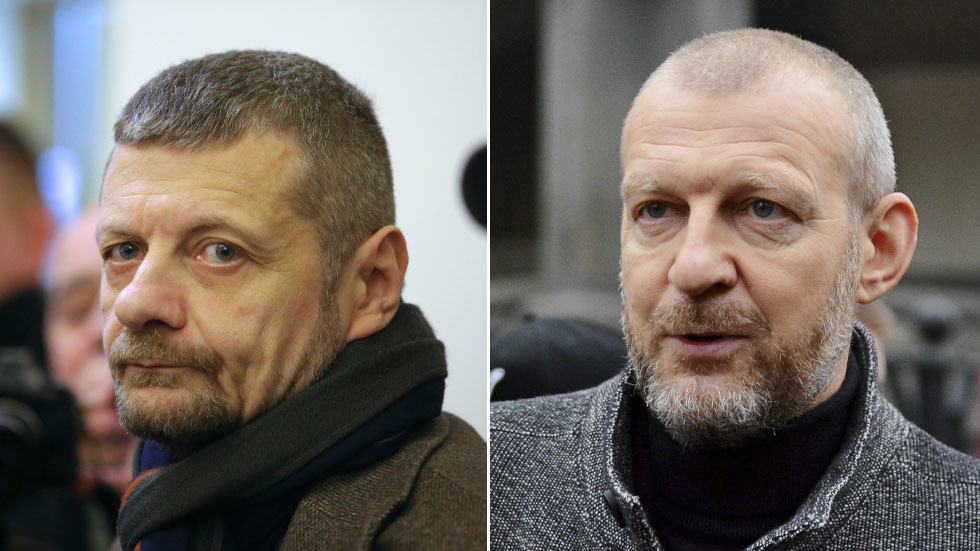
(L) Ihor Mosiychuk © Sputnik; (R) Andriy Teteruk © Aleksandr Gusev / SOPA Images / LightRocket via Getty Images
The prisoner shared that Stebliuk was “acting like a serial killer from a horror movie.” People were injected with unknown substances, so they would “talk.” Konstantin remembers how he was brought to see Alla Belousova one time: “You are going to rape a DPR minister, [they said]. I saw Alla, she looked completely out of it and there were pills everywhere. I had to muster up all my imagination to convince them that it was impossible.” Belousova later talked about how the guards murdered her husband right in front of her.
The signature torture move in Pokrovsk (formerly called Krasnoarmeisk) was the “hammer of truth” – a wooden mallet that was used to beat up prisoners.
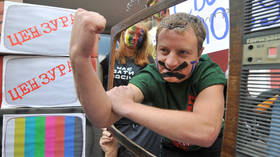
Read more
The UN Human Rights Mission identified 184 people who were unlawfully detained at the Kharkov facility of the Security Service of Ukraine (SBU) in 2014-2016. Amnesty International published a report in 2016 entitled “You don’t exist”, in which they revealed there were special detention centers where people lost all communication with the outside world: “We have found unlawful detention facilities in Mariupol and other places, but the main one was the SBU building in Kharkov, where some people were held for over a year.”
International human rights organizations eventually were able to visit SBU jails, but they never obtained testimony about the most gruesome torture procedures. Former prisoners said they got a chance to see human rights representatives only after they had received medical assistance and were made look “presentable.” International organizations never saw what was really happening in the “Library” or other torture chambers organized by Ukrainian nationalists.
ISIS playbook: human shields
Kiev was accused of using civilians as protection for the Ukrainian armed forces by stationing military equipment inside residential neighborhoods as early as 2014. The practice of employing “human shields” has become ubiquitous this year.
The fate of Mariupol’s civilian population was a genuine tragedy. “Those who tried to flee were, at best, stopped and turned back. They said, go back home, we’re not letting anyone out. There were Ukrainian armed forces and Azov checkpoints at exit routes from the city. Some cars left and never came back. We have no clue what happened to those people. There were rumors that those who tried to escape were simply shot,” says Veronika, a local resident.
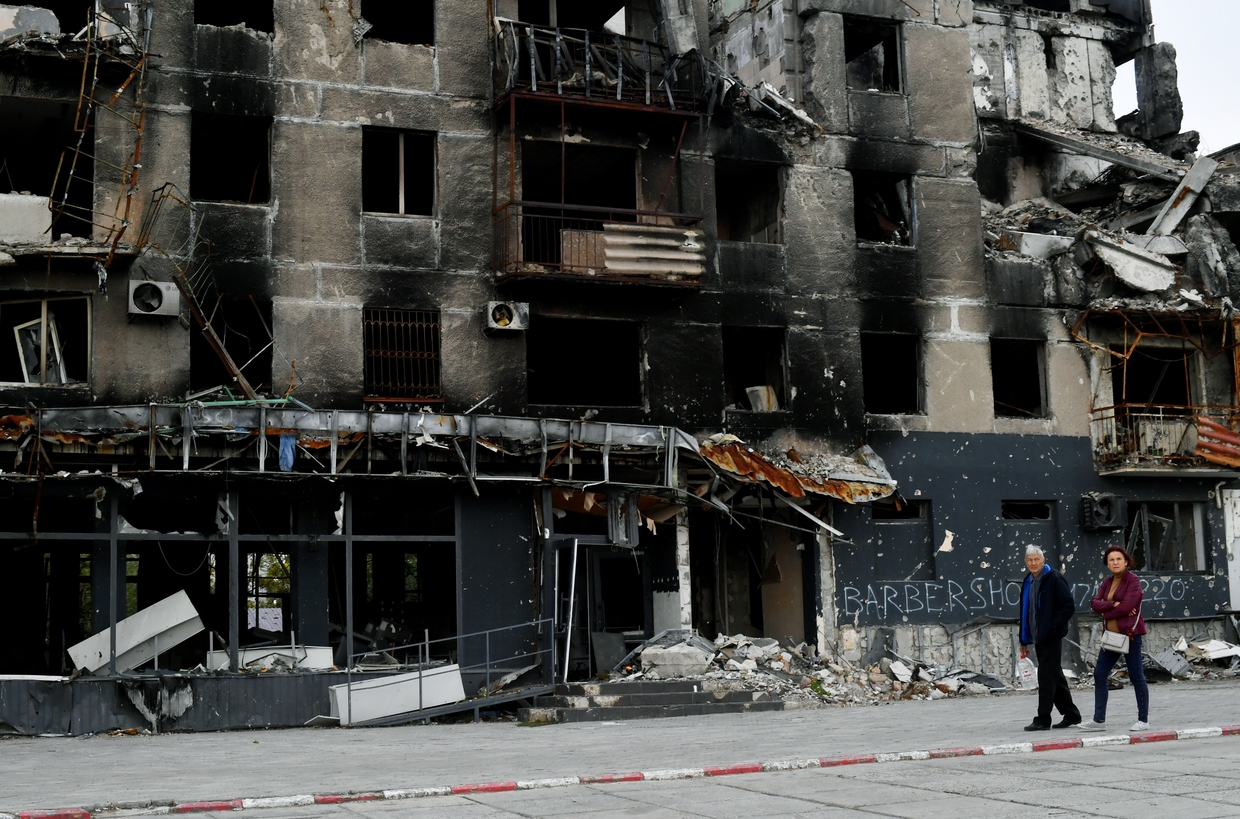
Residents walk in a street, as Russia’s military operation in Ukraine continues, in the port city of Mariupol, Donetsk People’s Republic. © Sputnik
Evgeniya, another local and the mother of a young baby, says: “When I tried to go out, a sniper would shoot near me so that I’d go back to hide in the basement. This is how they kept people trapped in the basements. I sometimes would have to run across the street between the basement where we were hiding and my house, and they routinely fired bursts in my direction just as a warning. They knew for sure that I had a baby in the basement because I had talked to them many times before the whole thing started.”
This was confirmed at an Arria-formula meeting of the UN Security Council by French journalist Anne-Laure Bonnel. At the meeting, she showed an interview with a Mariupol resident, who said: “I know for certain that they’re not letting people out, they’re beating them with buttstocks and forcing them to stay indoors. The Azov battalion stops all foot and car traffic. I personally know a guy who was not allowed to get out.”

Read more
UN representatives documented a case in the village of Staraya Krasnyanka (Lugansk People’s Republic) where Ukrainian soldiers occupied a nursing home, mined all roads in the vicinity, and did not allow the elderly residents to leave.
This practice is not limited to areas of active fighting. In Odessa, armor has been deployed inside densely populated residential districts and near the beautiful building of the Opera Theater.
On August 4, 2022, Amnesty International issued a report accusing the Ukrainian military of stationing its troops and artillery near hospitals, schools and residential buildings thus turning them into military targets. By doing so, it endangered civilians and violated international humanitarian law and the laws of war, the rights group said. After an aggressive pushback from the Ukrainian government, Amnesty was forced to apologize for the “distress and anger” it caused Ukrainians.

Read more
There is a full-scale witch hunt underway in the cities and towns Russia has withdrawn from. On November 17, 2022, the Ukrainian military, acting on local vigilantes’ reports, executed 39 residents of Kherson, while 74 people were taken away to undisclosed locations. A video has been posted online, in which soldiers of the Ukrainian 25th Brigade say they have their commanders’ orders to shoot all civilians on the territories formerly controlled by the Russian army. Members of Azov have published a video of the massacre of Kupyansk residents, which they blamed on Russia. The file metadata, however, shows that the video was recorded on November 9, and Kupyansk has been under Ukrainian control since early September. Those among their own ranks who don’t want to fight are treated no better than Russian prisoners. One Ukrainian serviceman complained that his fellow soldiers had shot him in the leg.
On April 25, the deputy head of the Zaporozhye Region’s police administration, Lt. Col. Alexei Selivanov, reported the kidnapping of the daughter of Kupyansk mayor Gennady Matsegora and two grandchildren of Valentina Kobeleva, a local entrepreneur and a member of the Kupyansk city council representing the Opposition Platform — For Life party. “So this government now kidnaps children,” Selivanov said. This brings memories of the assassination of Darya Dugina, the daughter of well-known Russian political scientist Alexander Dugin, which was perpetrated on Russian territory by a Ukrainian operative, something even the US has had to admit.
***
French President Emmanuel Macron has recently backed plans to create a special tribunal to investigate “Russia’s aggression.” But given that Ukrainian soldiers commit war crimes, including with the help of weapons send by Paris, Monsieur Macron may also want to look in that direction.
The statements, views and opinions expressed in this column are solely those of the author and do not necessarily represent those of RT.




